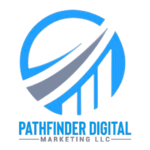Achieving higher ROI with Google AdWords requires advanced strategies. Simple ad setups might get you started, but refining your approach ensures better performance. One way to start is by optimizing your ad copy. Well-crafted ad text grabs attention and encourages clicks. This means more potential customers landing on your site.
Negative keywords are another powerful tool. They help you prevent wasted spend on irrelevant clicks. By excluding certain words, you focus your budget on more promising prospects. This boosts the efficiency of your campaigns.
You also need to leverage advanced targeting options. Google AdWords offers various ways to target specific audiences. Using these options helps you reach people who are more likely to be interested in your products or services.
Lastly, analyzing your campaign performance regularly is crucial. Continuous review and adjustment help you stay on course. By monitoring key metrics, you can identify what’s working and what isn’t, making informed decisions to improve your ROI.
With these advanced tips, you can take your Google AdWords campaigns to the next level, achieving better results and maximizing your advertising spend.
Optimizing Ad Copy for Click-Through Rates
To optimize your ad copy for higher click-through rates (CTR), start by making your headlines eye-catching. Use active verbs and highlight what makes your offer unique. A clear and compelling headline grabs attention and makes users want to learn more.
Use keywords strategically in your ad copy. Include primary keywords in the headline and descriptions. This helps your ad match more relevant searches. Also, personalize your ads by addressing potential customers directly. Use words like “you” and “your” to create a connection.
Follow these tips to improve your ad copy:
- A/B Test Headlines: Try different headlines to see which ones perform best. A/B testing helps you identify the most effective messages.
- Incorporate Emotional Triggers: Use words that evoke emotions or urgency, like “limited time offer” or “exclusive deal.”
- Highlight Benefits: Clearly state the benefits of your product or service. Let users know what’s in it for them.
- Include a Strong Call to Action (CTA): Use phrases like “Shop Now”, “Learn More”, or “Get Started” to encourage action.
Fine-tuning your ad copy with these techniques can lead to higher engagement and increased CTR, helping you get the most out of your ad spend.
Leveraging Negative Keywords for Cost Efficiency
Using negative keywords helps you save money by filtering out irrelevant clicks. It ensures that your ads don’t show for searches that aren’t related to your products or services. This improves the quality of your traffic and maximizes your budget.
Here’s how to effectively leverage negative keywords:
- Identify Irrelevant Terms: Look for search terms that trigger your ad but don’t relate to what you offer. For example, if you sell luxury cars, exclude terms like “cheap cars” or “car rentals.”
- Use Search Term Reports: Analyze your search term reports to find queries that aren’t converting. Add these as negative keywords to prevent unnecessary clicks.
- Group Keywords Categorically: Organize your negative keywords into groups based on themes. This makes management easier and ensures comprehensive coverage.
- Regularly Update Your List: Keep your negative keyword list up to date. Regularly review performance data to add new terms that are not performing well.
By implementing negative keywords effectively, you can significantly reduce wasted ad spend. This allows you to focus your budget on keywords that bring in more qualified traffic, leading to a higher ROI.
Utilizing Advanced Targeting Options
Advanced targeting options can help you reach the right audience more effectively. Google AdWords offers various tools to target specific groups. These include demographic targeting, location targeting, and device targeting.
Use these options to refine your audience:
- Demographic Targeting: Choose who sees your ads based on age, gender, income, and parental status. For example, if you sell kids’ toys, target parents directly.
- Location Targeting: Focus on specific geographic areas. This is useful for local businesses wanting to attract nearby customers or businesses expanding into new markets.
- Device Targeting: Decide if you want your ads to show on desktops, tablets, or mobile devices. Tailor your ads to optimize for each device type to enhance user experience.
In addition, take advantage of remarketing. This feature shows your ads to people who have already visited your site. It keeps your brand fresh in their minds and can encourage them to return and complete a purchase.
Using these advanced targeting options ensures that your ads are seen by people who are most likely to be interested in your products or services. This drives more qualified traffic to your site and improves your ad performance.
Analyzing and Adjusting for Continuous Improvement
Regularly analyzing and adjusting your campaigns is vital for ongoing success. By monitoring performance, you can see what works and what doesn’t.
Here are key steps for continuous improvement:
- Track Key Metrics: Use Google Analytics or other tools to track metrics like CTR, conversion rates, and cost-per-click (CPC). This data helps you understand how your campaigns are performing.
- Conduct A/B Testing: Test different versions of your ads to see which performs better. Change one element at a time, such as the headline or CTA, to identify what increases effectiveness.
- Analyze Conversion Data: Look at which keywords and ad groups drive conversions. Focus your budget on high-performing areas and tweak or pause low-performing ones.
Additionally, review your ad schedules. Identify the best times and days for your ads to run by studying performance data. Optimize your bidding strategies to ensure maximum ROI during peak periods.
Continuously refining your strategy based on performance data helps you stay competitive and improves your ad efficiency over time. Proper analysis and adjustments ensure that your marketing efforts are always aligned with your business goals.
Conclusion
A successful Google AdWords campaign requires a combination of optimized ad copy, effective use of negative keywords, advanced targeting, and regular performance analysis. Each of these elements plays a crucial role in maximizing your return on investment. By integrating these advanced tips, you can run more efficient and effective campaigns, reaching your goals more consistently.
Continuous learning and adjustments ensure that your strategy stays relevant and productive. Updating your approach based on data helps you make the most of your advertising budget, driving better results for your business.
Are you ready to enhance your Google AdWords campaigns for higher ROI? Contact Pathfinder Digital Marketing today to create a customized plan that suits your needs. Let’s work together to achieve your marketing goals and grow your business online. Book your Google Ads consultation today!






